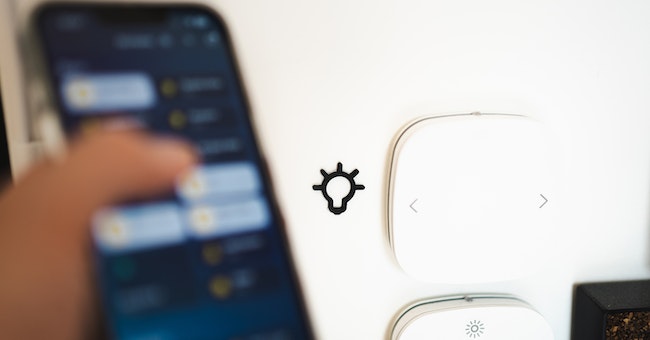The Internet of Things (IoT): Connecting Our World in Unprecedented Ways

Introduction
In the age of technological advancement, the concept of the Internet of Things (IoT) has emerged as a groundbreaking innovation that is shaping the way we interact with the world around us. IoT has transformed ordinary objects into smart, interconnected devices, creating a seamless network that enhances efficiency, convenience, and connectivity. This blog delves into the world of IoT, exploring its definition, applications, benefits, challenges, and its potential impact on various industries.
Defining the Internet of Things
The Internet of Things refers to the interconnectedness of everyday objects, devices, and systems through the internet, enabling them to send, receive, and exchange data. This connectivity enables objects to gather information, make informed decisions, and even interact with one another, often without the need for human intervention. From smart thermostats that adjust temperature based on user preferences to wearable fitness trackers that monitor health metrics, IoT has permeated various aspects of our lives.
Applications of IoT
Smart Homes: IoT has revolutionized home automation. Smart thermostats, lights, locks, and appliances can be controlled remotely through smartphones, optimizing energy usage and enhancing security.
Healthcare: Wearable devices and medical sensors collect patient data, enabling healthcare professionals to monitor conditions remotely, predict health issues, and provide timely interventions.
Industrial IoT (IIoT): Industries use IoT to optimize manufacturing processes, monitor equipment health, track inventory, and enhance supply chain management. IIoT improves efficiency and reduces downtime.
Transportation: IoT-enabled vehicles connect to the internet, facilitating real-time data exchange with other vehicles, traffic infrastructure, and navigation systems, leading to safer and more efficient transportation.
Agriculture: IoT aids precision farming by collecting data on soil conditions, weather patterns, and crop health, helping farmers make informed decisions about irrigation, fertilization, and pest control.
Benefits of IoT
Enhanced Efficiency: IoT streamlines processes, reducing manual interventions and minimizing errors, leading to improved efficiency and productivity.
Data-Driven Insights: IoT generates vast amounts of data that can be analyzed to gain insights into user behavior, product performance, and operational trends.
Improved Decision-Making: Real-time data collection and analysis enable organizations to make informed decisions promptly, fostering agility and adaptability.
Cost Savings: IoT-driven automation optimizes resource usage, reduces energy consumption, and extends the lifespan of equipment, resulting in cost savings.
Personalization: IoT enables tailored experiences by collecting user data and preferences, allowing businesses to offer personalized products and services.
Challenges and Concerns
Security: The interconnected nature of IoT devices poses security risks, as unauthorized access could compromise sensitive data or even lead to physical harm in some cases.
Privacy: IoT devices often collect personal data, raising concerns about how this data is used, stored, and shared, and whether user consent is adequately obtained.
Interoperability: Different IoT devices and platforms may not seamlessly communicate with each other due to varying protocols and standards, hindering integration.
Scalability: As the number of connected devices increases, managing and maintaining these devices becomes a challenge, requiring robust infrastructure and management solutions.
Data Overload: The sheer volume of data generated by IoT devices can overwhelm organizations, requiring efficient data storage, analysis, and management strategies.
The Future of IoT
As technology continues to advance, the IoT landscape is expected to expand further, integrating even more devices, industries, and aspects of daily life. The rollout of 5G networks will enhance connectivity and enable faster data transfer, enabling more real-time interactions between devices. In healthcare, IoT could lead to more personalized treatment plans based on continuous monitoring, while in smart cities, IoT could optimize resource usage and improve urban planning.
Recommnded Online resources for IoT
An Introduction to Programming the Internet of Things (IOT)
In the "An Introduction to Programming the Internet of Things (IoT)" course, students will explore the fundamentals of embedded systems, the Raspberry Pi Platform, and the Arduino environment. This course guides learners through designing, creating, and deploying an exciting IoT device using these platforms. Topics covered include embedded systems basics, Raspberry Pi Platform usage, Arduino environment programming, debugging embedded systems, and controlling the physical world with sensors and actuators. The course culminates in a Capstone Project where students design and build a microcontroller-based embedded system for a unique final project suitable for showcasing to potential employers.
Course highlights:
Fundamentals of IoT: Learn about embedded systems, Raspberry Pi, and Arduino.
Practical Device Creation: Design, create, and deploy IoT devices.
Programming and Debugging: Develop skills in programming and debugging embedded systems.
Sensor and Actuator Control: Understand how to control the physical world using sensors and actuators.
Capstone Project: Apply learned skills in designing and building a microcontroller-based embedded system.
IoT | Internet of Things | What is IoT ? | How IoT Works? | IoT Explained in 6 Minutes | Simplilearn
Discover how IoT is revolutionizing daily life by enabling remote monitoring and control of various appliances. With an easy-to-understand use case, this video provides a comprehensive overview of IoT, perfect for beginners. Learn about IoT devices, their functioning, and real-world applications. Join us to grasp the fundamentals of IoT and its impact on modern living. Enrich your knowledge and test your understanding with a quiz at 04:46!
Course highlights:
Learn about the impact of IoT on daily life.
Explore remote monitoring and control of appliances.
Understand IoT fundamentals through a simple use case.
Discover IoT devices and their functionalities.
Explore the working principles of IoT technology.
Uncover real-world applications of IoT in various domains.
IoT Full Course - Learn IoT In 4 Hours | Internet Of Things | IoT Tutorial For Beginners | Edureka
Embark on a comprehensive journey into the world of Internet of Things (IoT) with our 4-hour full course. Delve into the fundamental concepts of IoT, from its definition and significance to the benefits, features, and architecture. Explore IoT ecosystem layers, including cloud and fog computing, and discover the taxonomy of IoT. Gain hands-on experience with Raspberry Pi, exploring its hardware, OS installation, and Sense Hat tutorial. Master Raspberry Pi camera applications, including capturing, recording, and even security camera usage. Understand Windows 10 IoT Core and explore Arduino vs. Raspberry Pi. Discover top IoT projects, IoT devices security, applications across domains, job prospects, salary trends, and essential skills. Become an IoT expert with Edureka's comprehensive training.
Course highlights:
Comprehensive IoT Overview: This course provides an in-depth exploration of the Internet of Things (IoT), covering topics from its introduction and significance to its benefits, features, and architecture.
Hands-On Raspberry Pi: Gain practical experience with Raspberry Pi as you delve into its hardware, installation, and usage, including its capabilities and accessories.
IoT Applications & Projects: Discover real-world applications of IoT across domains like healthcare, agriculture, smart cities, and more. Explore top IoT projects, such as biometric systems and smart homes.
IoT Career Insights: Understand the career prospects in the IoT field, including current roles, emerging opportunities, required skills, salary trends, and the market's growth projections.
Expert Guidance: Led by Edureka, a reputable online learning platform, this course offers expert guidance, detailed explanations, and hands-on demonstrations to help beginners grasp IoT concepts effectively.
Conclusion
The Internet of Things has brought a new level of connectivity and convenience to our lives, transforming everyday objects into intelligent entities that communicate and collaborate with each other. As IoT continues to evolve, its impact on industries, economies, and societies will be profound. However, addressing security, privacy, and interoperability concerns is essential to unlock the full potential of IoT while ensuring a safe and secure digital environment. In this interconnected future, the possibilities are limitless, and the Internet of Things is poised to shape the way we interact with the world for generations to come.





